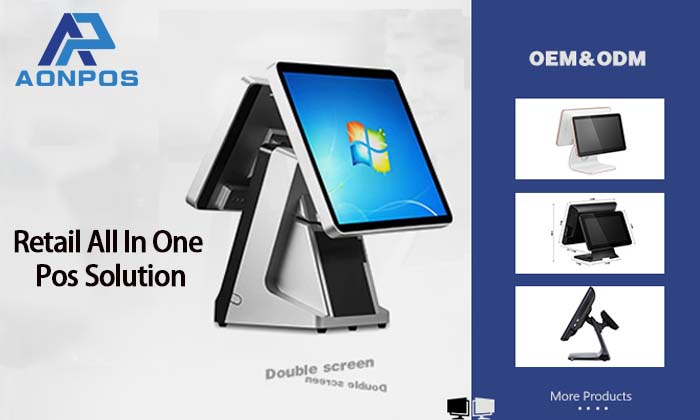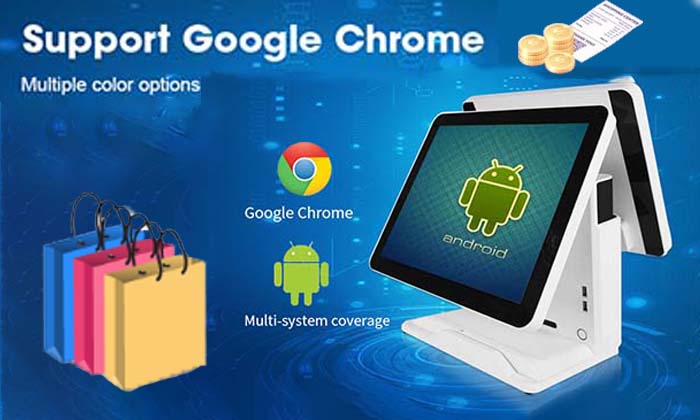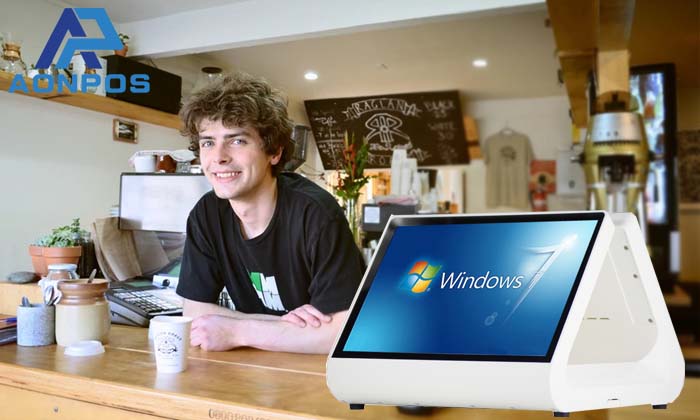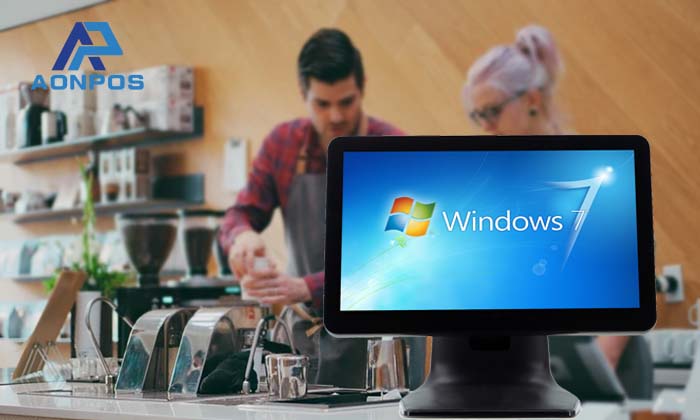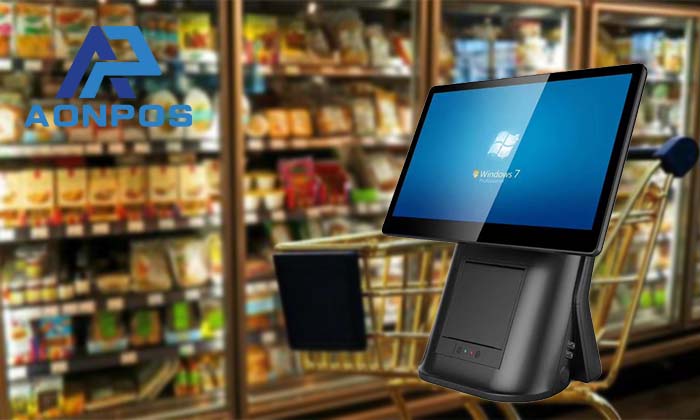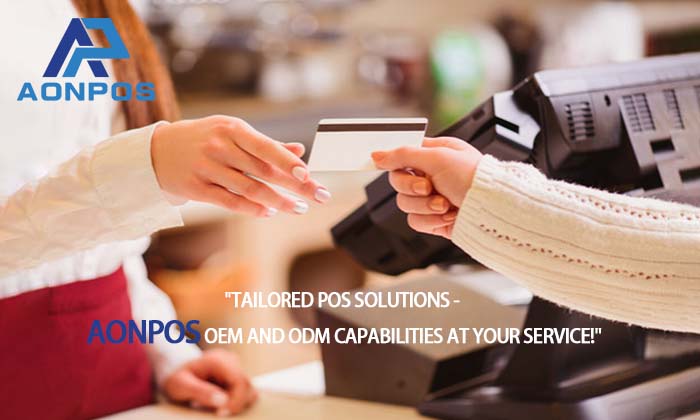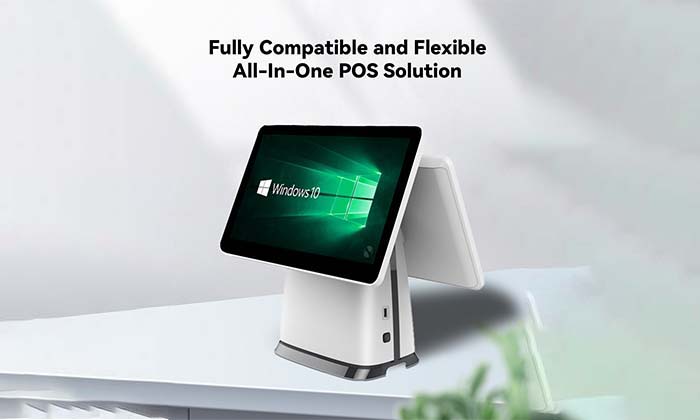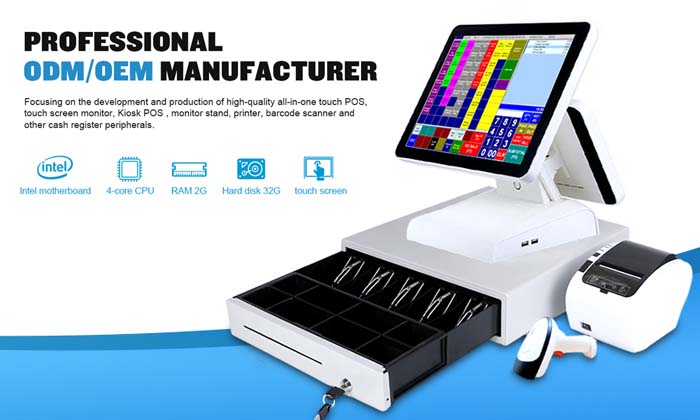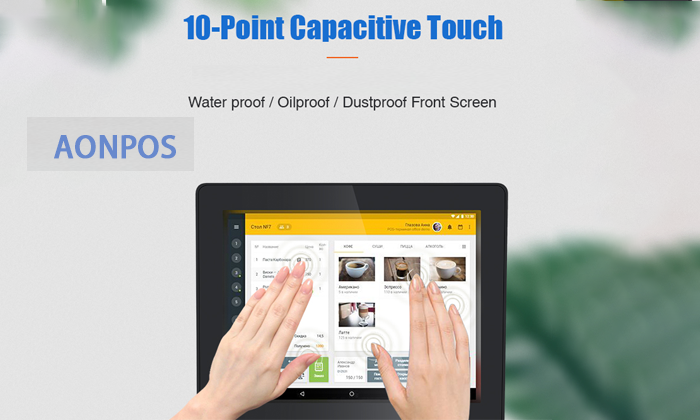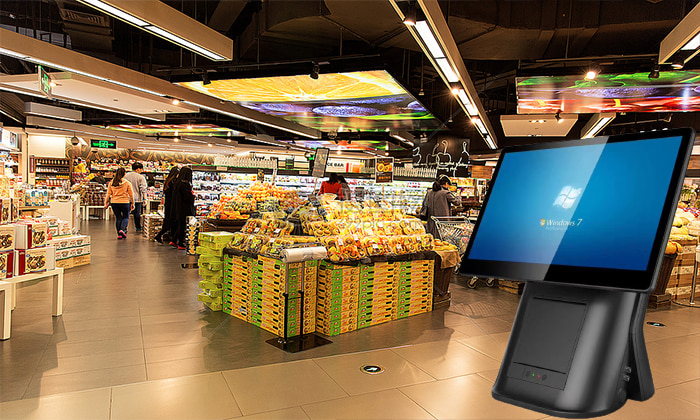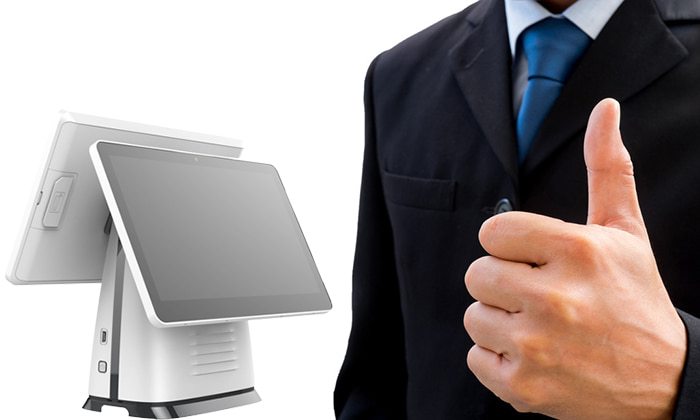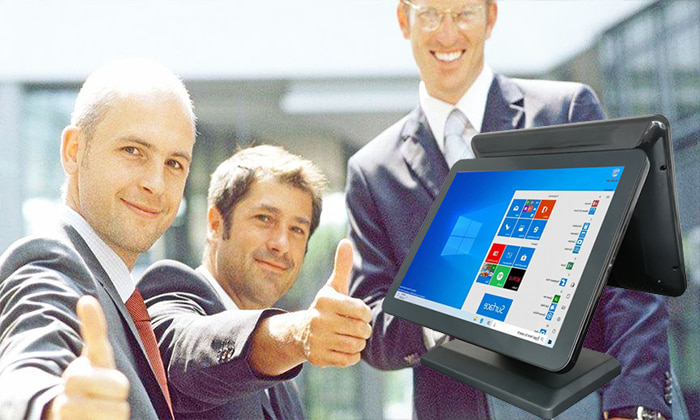How to Choose the Right POS Machine Supplier?
Aug 03, 2023
In today's competitive retail market, POS wholesale customers not only need efficient POS hardware but also a reliable supplier partner to meet their growing business demands. Before choosing the right POS Machine Supplier careful consideration of the following factors is essential:
1. Hardware Performance and Stability: Look for a supplier that provides high-performance, stable, and reliable POS compuuter hardware. Ensure that the hardware can smoothly operate under high loads and minimize the chances of breakdowns, thereby guaranteeing efficient sales processes and customer satisfaction.
2. Peripheral Compatibility: Ensure that the supplier's Cash Register hardware seamlessly integrates with various peripherals such as barcode scanners, printers, cash drawers, etc., to cater to different transaction and business needs.
3. Touchscreen Display Quality: Opt for a high-resolution, clear, and bright touchscreen display, allowing your customers and sales staff to view transaction information easily and enhancing your store's image. If the POS Equipment Hardware includes a touchscreen, make sure it is responsive and accurate, facilitating convenient interaction.
4. Appearance and Design: As all in one POS hardware is typically placed at the front counter, appearance and design are also crucial considerations. Choose hardware that aligns with your store's style and image, creating a better shopping experience for your customers.
5. After-Sales Service: Select a supplier that offers excellent after-sales service, ensuring timely repairs and maintenance of your pos system hardware to minimize downtime and business losses.
6. Cost-Effectiveness: Lastly, consider the supplier's price-performance ratio, ensuring that the chosen windows pos hardware falls within a reasonable price range and meets your budget requirements.
In summary, selecting the right Pos Device Hardware Supplier for wholesale customers is a decision that requires careful consideration. By finding a supplier that offers high-performance hardware, stable operations, excellent after-sales service, competitive pricing, and meets your specific business needs, you can achieve a successful POS solution, enhance sales efficiency, and provide a superior shopping experience for your customers.
Recommended Suppliers:
1. Top Supplier: ABC POS Solutions
ABC POS Solutions is a well-established supplier with years of experience in the POS industry. They offer high-performance, stable, and reliable desktop POS hardware, catering to the needs of numerous retail businesses. Equipped with advanced processors and ample storage, ABC POS Solutions ensures efficient transaction processing and swift application responses.
2. Focused on Wholesale Industry: AonPOS
AonPOS specializes in providing POS solutions for the wholesale industry. Their desktop POS hardware is designed specifically for wholesale businesses, and they offer custom hardware configurations to meet the unique requirements of various wholesale enterprises. With cutting-edge technology, outstanding performance, and security, AonPOS's hardware boasts a stylish design that complements various retail environments. Their after-sales service receives high praise from satisfied customers, offering quick responses and efficient solutions.
3. Leading Global Supplier: GlobalPOS Inc.
GlobalPOS Inc. is a leading global POS machine supplier with a wide range of applications, serving multiple countries and regions. Their desktop POS hardware is suitable for various industries and business sizes. GlobalPOS Inc. also provides multiple purchasing and leasing options, allowing wholesale customers to choose according to their specific needs.
When selecting a POS machine supplier, wholesale customers can consider the above supplier cases, combined with their business requirements and budget constraints, to make a wise decision. Identifying the right supplier will provide wholesale customers with a better POS solution and enhance their competitiveness.
